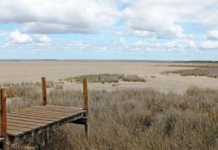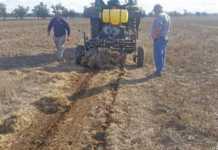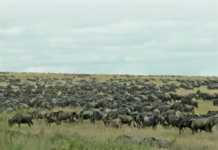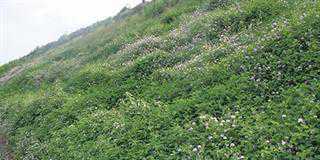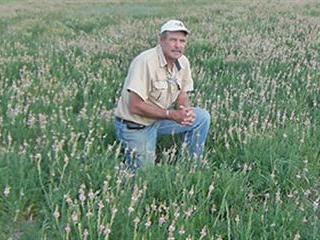
In some ways a drought can be compared to a refining fire that separates precious metals from trash. It separates the reliable – and therefore more valuable – pastures from the ‘unreliable’. Said in another way, it’s important to know which pasture species are drought tolerant, and only a drought can bring this valuable information to light.
Just as a loving grandfather shouldn’t have any favourite grandchildren, so a true pasture specialist can’t have any favourite pasture plants. All of my 12 grandchildren are, of course, the best in the world. But when it comes to plants, I must admit I’ve always had a soft spot for sainfoin, even though it’s disappointed me more often than my other pasture ‘children’.
Attributes
Sainfoin (Onobrachys viciifolia) is a perennial legume with four valuable attributes. It’s winter-green, non-bloating, has a high feed value and is drought tolerant. My love affair with sainfoin started more than 30 years ago. In 1982 I travelled with Willie Nel of Moolmanshoek in Ficksburg in the Free State, to Montana in the US to learn more about Sainfoin from Prof Ray Ditterline, a leading authority on this wonderful pasture plant.
Of all the things he told us, two facts really stuck – sainfoin grows best in calcareous soils and it doesn’t respond well to phosphate. (Apparently, sainfoin has the ability to extract phosphorus from the soil). It wasn’t necessary for Prof Ditterline to tell us the legume is extremely cold tolerant. Montana has long, icy winters, and temperatures frequently drop to -20°C. A year or so ago Willie and I sat on the stoep of his house at Moolmanshoek doing what I had prophesied we’d be doing many years ago when we were fervently looking for the best pasture combinations for his farm.
“Willie,” I’d told him, “one day, when we’re both grey-haired and have many grandchildren, we’ll sit on this stoep and reflect on all that we’ve learnt over the years.” Now that time had arrived. “Willie, which pastures made the most money for you?” I asked. “I think it was serradella,” he said. “What about sainfoin?” I asked. “Oh yes,” he nodded, “that’s right.”
Willie had large areas of sainfoin planted on his heavy black soils. (I say ‘had’, because Moolmanshoek has since been turned into a game ranch). Sainfoin was grazed by all classes of livestock, but mostly by Willie’s dairy cows – it’s an excellent rainfed milk-producing pasture.
Balanced
Success with sainfoin on Moolmanshoek led to many trial plantings on other farms. But the failure rate was distressingly high – over 95%! It either failed to grow, or it persisted. However, this was when I was still caught in the ‘pH trap’. That is, when I still believed that legumes required a near neutral pH of 6,5 to 7 (water) in order to grow well. It was only after coming to grips with the Albrecht system that the words of Prof Ditterline came back to me.
As I’ve mentioned, he said sainfoin requires soils rich in calcium. And my regular readers will know Prof William Albrecht emphasises the importance of calcium, even to the point of liming alkaline soils that have a shortage of calcium. The point that I want to make is that, when soils are balanced according to Albrecht principles, the success rate with sainfoin skyrockets.
Grazing
And there’s another secret for sainfoin success. This has to do with how it’s grazed. The re-growth of sainfoin after grazing is a lot slower than that of lucerne and therefore the rest period between grazings is longer. It does, however, build up more bulk, so when the time comes to graze, there’s more forage per hectare than lucerne has at its optimum grazing stage.
Just remember – mixing it with other pasture species that have a shorter grazing cycle spells disaster for sainfoin. Ficksburg and its surrounds experienced the worst drought ever during the 2011/2012 summer season. On one farm, the best land yielded 1,5t/ha maize, while the rest was simply just not worth reaping. On the same farm, though, a four-year-old stand of sainfoin sprung a marvellous surprise. Soon after the early spring rain this season, it came away and was soon in full flower.
This is one legume that has highly digestible flowers relished by livestock. It can radically shorten Highveld winters and lower winter feed costs.
John Fair is a leading expert on pastures. He heads up Fair’s Biofarm Assist, and can be contacted on 058 622 3585 or [email protected].

